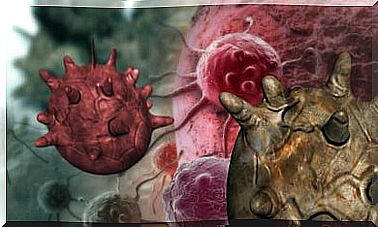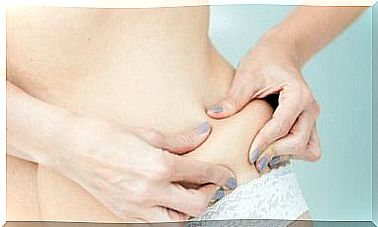Bronchiolitis In Babies: Everything You Need To Know

The arrival of seasons such as autumn and winter in different latitudes worries families and health professionals. The general reason is the increase in cases of respiratory illnesses. The younger the child who suffers from bronchiolitis, the greater the concern, and even more so when it comes to babies.
bronchiolitis in babies
Bronchiolitis is an airway disease that occurs when the bronchioles (the smallest and final part of the bronchi) become inflamed due to an infection usually of viral origin. Thus, these canaliculi show edema and increased secretions that can cause difficulty breathing.
According to information presented on the website of the Spanish Association of Pediatrics, bronchiolitis is more frequent in babies under one year of age and represents 18% of all pediatric admissions. The most common virus is the respiratory syncytial virus (RSV), but adenoviruses and influenza viruses may also be responsible.

What is the most common form of bronchiolitis?
After a brief incubation period, manifestations similar to those of a common cold may appear. Therefore, its symptoms include sneezing, runny nose, coughing, and episodes of mild fever.
Progressively, the cough becomes more persistent and what appeared to be a common illness becomes a matter of great concern. Thus, irritability, lack of appetite, agitated breathing and difficulty are added to the initial symptoms . This last symptom, of increasing intensity, usually reaches its maximum expression within 24 or 48 hours, at which time most admissions occur, and then gradually improves.
Data of interest…
As reported by Dr. M.ª Luz García, from the Pediatrics Service of the Severo Ochoa University Hospital, Alfonso X El Sabio University. Madrid:
What should we do when the first symptoms of bronchiolitis appear in babies?
- On the one hand, it is essential to remain calm so that we can act with peace of mind.
- It is important to ensure the baby is well hydrated to help fluidize secretions. In addition, it should be borne in mind that, sometimes, agitation and increased respiratory rate require that fluid intake be taken in very small amounts and more frequently.

In this regard, Dr. Ana María Balanzat, head of the Department of Pediatrics at the Hospital de Clinicas de Buenos Aires, Argentina, stated that:
The lack of oxygen in the blood and tissues and the accumulation of carbon dioxide can be life-threatening for the child who suffers from it. “ In these situations, hospitalization and administration of oxygen are necessary,” he explained.
Conclusion
Since bronchiolitis often affects infants and very young children, it is important to consult a health care professional who will assess the young patient’s condition, type of breathing and hydration, as well as the presence or absence of fever.
Another element that should be highlighted is to avoid the use of tobacco and environments with a high amount of pollution. As a study published in the medical journal BMJ Open concludes: “In the context of exposure to air pollution, tobacco use causes further loss of lung function and aggravates respiratory symptoms.”
It is therefore suggested to carry out periodic follow-up visits after treatment has been established to be alert to possible complications. Even if the evolution of the disease is desirable or expected, this control must be maintained.









